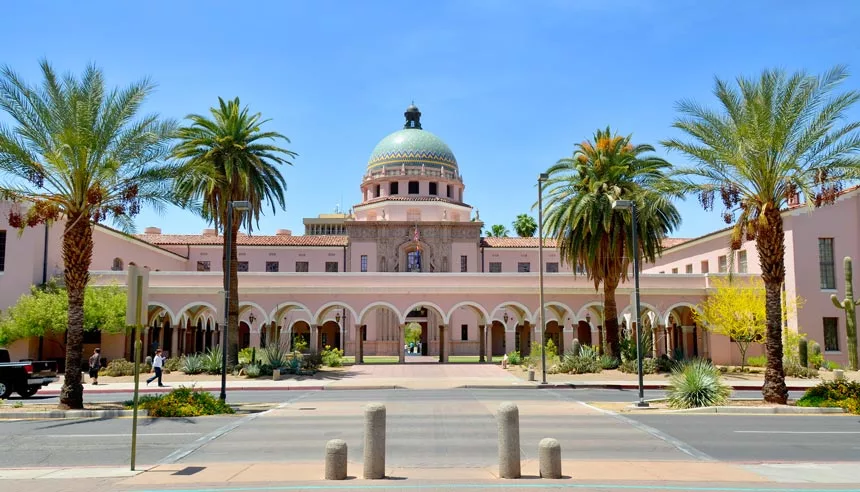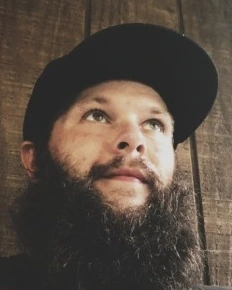Tucson Addiction Treatment Resources
Table of Contents
- Tucson Addiction Treatment Resources
- A Brief History of Drugs and Addiction in Tucson, AZ
- Prohibition, and the Wild West: A History of Alcohol Abuse in Tucson
- How Tucson, AZ Is Providing Addiction Treatment Help to Those in Need
- Making Improvements in Arizona Addiction Treatment Services
- Tucson Drug Court and Court Ordered Treatment in AZ
- The Many Highlights of Living in the Tucson Recovery Community
- Finding the Right Treatment for Addiction in Tucson
- Medically Reviewed By
Once a thriving city, and significant hub for regional transit, trade, and commerce, Tucson, AZ, was named after the Native American term “Cuk Son,” meaning “Base of the Hill.” Over recent years, the city’s rebound is primarily attributed to its aerospace and defense industry, its convenient location between Phoenix and Las Vegas, and its prime location within the US/Mexico border.
Struggles with addiction are nothing new to Tucson, AZ – indeed, this southwestern state has been humbled by the prevalence of addiction and drug-related incidents. In the past ten years, it was ranked as one of the worst in the United States for meth usage, leading to a clear need for better substance abuse treatment in Tucson and statewide.
Like many other cities, opioids have become a problem also. Synthetic opioid pills laced with fentanyl and potent black-tar heroin have recently tightened their grip on Tucson. Recent reports show that opioids claim seven people per day in Arizona, with Tucson making up most of this number.
Tucson is part of a vast metropolitan area with around four million people. The city is also relatively spread out, more extensive than New York City in its scope. This means lots of territory for the Mexican drug cartels that target the city and surrounding areas.
A Brief History of Drugs and Addiction in Tucson, AZ
The first recorded issues with substance abuse in Tucson date back to 1910 when some Mexican immigrants were thought to have smoked marijuana while working on farms near Tucson. Eventually, the city would become a hub for the early marijuana smuggling and trade routes, paving the way for more potent substances.
In 1937 when marijuana became illegal under federal law, this provided an opportunity to profit from prohibition for Mexican marijuana farmers. This remained relatively small-scale until the 1950s and 60s when drug use exploded in the United States.
Today, there are hundreds of medical marijuana dispensaries in town and many other businesses that sell cannabis products like edibles or oils used for vaping devices.
Cocaine Addiction in Tucson
In addition to marijuana, cocaine has also been popular in Tucson since the 1970s, when cocaine was first introduced to Arizona by Mexican cartels who controlled much of the drug trade across Arizona and California during this period.
Cocaine is still widely available today, although it isn’t as popular as it once was because of the rise in meth and opioid abuse.
The Tucson Meth Addiction Crisis
The number of meth labs found by law enforcement agencies across Arizona was at an all-time high in 2014. However, clandestine labs have been declining due to stricter regulations on pseudoephedrine sales.
This resulted in the flood of meth that Tucson and the rest of the country currently deal with. High-grade meth made in super-labs in Mexico joins opioids in a one-two combination, leaving a wake of addiction and death throughout the United States.
Prescription Pills and Opioid Treatment in Tucson, AZ
Tucson’s current fentanyl problem started with prescription pain pills, like in many cities. In 2016 there were more deaths caused by prescription drug overdoses than any other substance abuse-related cause across Arizona, including alcohol and illicit drugs like heroin and meth.
As time went on, more people began using prescription drugs, which led to increased addiction rates due to easy access. There were nearly 600 pain management clinics in Arizona, with Tucson having one of the highest numbers of these clinics per capita.
When federal regulations cracked down on these pill mills, cartels began flooding Tucson with Mexican black tar heroin. However, the constant demand for pain pills is causing cartels to produce counterfeit prescription painkillers such as Oxycontin and Percocet laced with deadly amounts of fentanyl.
The city is making headlines once again with the eye-popping numbers of opioid deaths in Tucson. Tucson is no stranger to milestone events in the category of drugs and alcohol.
Prohibition, and the Wild West: A History of Alcohol Abuse in Tucson
In the early 1900s, Tucson was known as an oasis for alcoholics and addicts. The city had become a destination for some of the country’s most notorious characters.
William Henry Harrison Bostwick was one such character. Bostwick is known as “The King of Bootleggers” because he controlled illegal alcohol distribution in Arizona during Prohibition. He was also known as “Wild Bill” because he liked to party hard with his friends.
In 1919, Bostwick opened an illegal bar called the White Owl Saloon on Congress Street in Downtown Tucson. This would later become the site of Hotel Congress, which has been a favorite among locals and visitors for decades.
Bostwick was arrested several times and even spent time in prison. Despite his reputation as a bootlegger, he still managed to win multiple elections for mayor in Tucson between 1913 and 1917. He also served four years in Congress, representing Arizona’s 1st district from 1915 to 1919.
In 1932, Arizona voters approved an amendment to legalize beer and wine sales by licensed establishments operating before Prohibition (e.g., bars). The illegal bootlegging gave way to illicit marijuana smuggling that eventually grew to monstrous proportions by the 1950s.
How Tucson, AZ Is Providing Addiction Treatment Help to Those in Need
As the nation’s opioid epidemic continues to ravage communities across the country, we must focus on how individual cities are battling substance abuse issues and providing help to those with substance abuse issues.
Tucson, AZ, has been hit hard by the opioid epidemic. The city is located in Pima County, which has had one of the highest rates of drug overdoses in the country since 2012. According to the Pima County Department of Public Health, 2,591 unintentional drug overdose deaths between 2000 and 2014. This averages out to about six deaths per day and, since then, has grown to seven per day.
Unfortunately, this epidemic shows no signs of slowing down anytime soon. Tucson alone has seen a 50% increase in heroin-related deaths over the past two years alone. In 2016, there were 115 heroin-related deaths — an increase from 82 heroin-related deaths in 2015 and 76 in 2014. The numbers have continuously climbed every year since then.
The situation is so bad that Governor Doug Ducey declared a public health emergency and allocated $10 million to expand access to treatment programs throughout the state. This money will be used to hire more police officers and fund an expansion of existing programs for people suffering from addiction.
Making Improvements in Arizona Addiction Treatment Services
The city has made plenty of changes to how it battles substance abuse. Some efforts include:
- Creating more community outreach programs like Narcotics Anonymous meetings and sober houses
- Increasing access to Naloxone (Narcan), which reverses overdoses caused by opioids such as heroin
- Expanding prevention education programs like Drug-Free Tucson
- Offering substance abuse counseling for simple possession arrest instead of jail time
These changes make Tucson an attractive location to receive treatment for substance abuse. If you’re thinking about making Tucson a permanent home, the city has plenty to offer new residents looking to build a new life.
Tucson Drug Court and Court Ordered Treatment in AZ
The Tucson Drug Court is a specialized court that addresses substance abuse issues by providing integrated treatment services to users and getting them back into society as fully functional members. The court follows an evidence-based treatment model known as Cognitive Behavioral Therapy (CBT), which focuses on changing behaviors to eliminate drug use.
All participants must be referred by the presiding judge and admitted by the court before beginning treatment. Once accepted, they have a probation period. They meet regularly with their liaison officer, attend group therapy sessions at least once per week, undergo random drug testing, etc.
They also receive case management assistance from trained professionals who help them adhere to their schedules and achieve their goals during this period. After completing this phase of treatment, participants graduate from the program and return to regular, probationary status for a few months until completing probation.
If you’re planning on making Tucson, AZ, a permanent home, you’ll find several advantages to becoming a full-time resident.
The Many Highlights of Living in the Tucson Recovery Community
Tucson, Arizona, is a great place to live, work, and play. The weather is mild, and you can enjoy a beautiful desert landscape with mountains and cacti. It’s also home to many Native American tribes and has a rich history that includes being one of the largest copper-producing cities in the world from the 1800s until the 1950s.
Tucson has been named one of the top 100 places to retire in America by Money Magazine because it offers affordable living, warm weather, and beautiful scenery. The city also has many cultural attractions, including over 300 days of sunshine per year, and over 200 art galleries, museums, and theaters.
Tucson is home to the University of Arizona, which boasts over 50,000 students enrolled at all levels of study, from undergraduate degrees through post-doctoral studies. The University employs a large number of residents from in and around Tucson.
You’ll also enjoy many recreation opportunities, including hiking in various mountain ranges, including Mount Lemmon, which is located just east of Tucson along I-19 near Benson Heights Road exit 37A off I-10 eastbound; Tubac Preserve, which offers scenic views while hiking through open grassland hillsides or along trails through dense pine forests; Sabino Canyon which features several trails leading into different sections of Sabino Canyon including Sabino Creek Loop Trail.
Finding the Right Treatment for Addiction in Tucson
The first step in finding substance abuse treatment in Tucson is determining what program will work best for you. It’s important to understand that not all programs are created equal – some programs are better than others at helping people recover from addiction.
While it’s essential to look at factors such as cost and location when comparing programs, it’s also necessary to consider factors like:
- The type of programming offered by the facility (12-step vs. alternative)
- The length of stay at each facility (more extended stays tend to be more effective)
- The number of clients enrolled at each facility (groups with fewer members tend to be more effective)
Tucson has something available to suit almost every visitor and transplant regardless of what you choose. For more assistance in finding a suitable location, visit Find Addiction Rehabs, the internet’s premier engine for matching users to treatment programs that fit them best.
Brandon is a highly skilled content writer and behavioral health marketer with over a decade of experience. In his own words: in my work with Find Addiction Rehabs, I have dedicated my expertise to a cause close to my heart – substance abuse recovery. Through my passion for the field, I’ve successfully compiled a track record of crafting compelling content that educates, inspires, and supports those on their recovery journeys.




